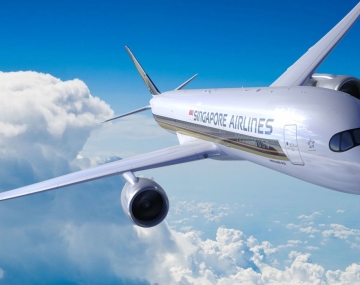Airlines
Air travel is so common these days that’s it’s easy to simply assume this is an industry that has always been robust and ever-present. But we’ve only been living with airlines for just over 100 years. Yes, that is a long time, but not all that long. DELAG (short for a very long name in German) was the world’s first airline, founded way back in 1909 and manufactured by the Zeppelin Corporation. By 1914 they were up in the air and in 1919, KLM (still in operation today) followed which then opened the door to Avianca (1919), Qantas (1921) and Czech Airlines (1923).
Airlines are expensive things to operate. The industry is characterized by very high fixed and variable costs where only a fraction of the income from ticket sales registers as potential profit. Nearly every player in the global transportation market is more profitable than airlines. Aircraft maintenance, aircrew, jet fuel and depreciation account for 44% of expenses, another 29% comes from servicing expenses, 14% for sales and reservations and 13% from overhead costs like advertising, etc.
Long story short, if you’re looking to make a quick buck and think you can be the next Southwest Airlines with quirky flight attendants and absurdly low costs, think again. But with all that said, airlines are vital to the world and as such will always be present. So even if they don’t make financial sense at some point in time, look for government subsidies to lead the charge.
Now that we know where the industry stands, although it’s a challenging market to operate in the choices of which airline to fly are abundant. The Airline Quality Ranking Report is a leading industry publication that most cite as the end-all, be-all of airline rankings. Customer complaints, denied boardings, on-time percentage and mishandled baggage are all scrupulously reviewed, and the end results weighted and ranked.
This year Delta Air Lines took top place. JetBlue Airways was right there but barely fell to number 2. Southwest Airlines is cheap and great quality, coming in at number 3 which was then followed by Alaska Airlines and Hawaiian Airlines. Delta achieved number 1 status in large part to its new and improved on-time performance. Hitting on-time goals has been a management obsession and it looks like it’s finally paying off. It also doesn’t hurt that the company behind the rankings, Embry-Riddle, lean heavily on on-time performance regarding weighting.
Some key areas that were not included in the rankings are general quality ratings, passenger experience feedback, the quality of the frequent flyer program and similar, customer-centric rankings. With that said however, Delta ranks relatively high in these areas as well so the U.S. air carrier would likely have remained on the top of the heap.


Comments:
Login to leave a reply